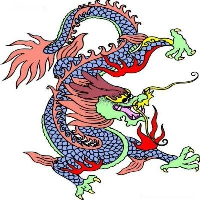杂志原文:AI Development Invigorates Global Economy
原文阅读是英语学习者必不可少的素材,纯英文的阅读材料可以让阅读者完全沉浸其中,对提高英语阅读水平更有益处。
By ZHANG XIN
AS artificial intelligence (AI) is increasingly widely applied in more realms of human society, including political affairs, finance, manufacturing, education, medical care, and transport, it is bringing about revolutionary changes to our lives.
It is a belief shared by most research institutes worldwide that AI will create industries valued at hundreds of billions and even trillions of US dollars, and benefit all countries that jump on the wagon by fueling remarkable growth of their economy. In the next decade, AI is also expected to increase global GDP by about 12 percent, or US $10 trillion.
North America and Europe stand to benefit the most in this round of technological revolution. By comparison, the adoption of AI is lower in developing countries, but it will still boost their economy to a modest extent. China, a key global player in AI development and application, will be a major contributor to its progress and consequently, world economic growth.
Larger Market
Spurred by demand and corporate activities, Chinas AI market is expected to grow fast. In the wake of the first wave of AI at the start of the 21st century, global AI development largely depended on R&D investment by governments, sci & tech giants, and venture capital. But as narrow AI technologies such as deep learning mature, demand has become the new driver of AI development.
China is a late entrant in AI research and application, but stands out for its huge market and application potential. Since 2016 Chinese Internet giants like Baidu and many technological startups such as Sensetime and Megvii have invested in development of AI technologies and their applications, and meanwhile are moving into technological diffusion in the sub-sections of different sectors. So far, China has built relatively complete industrial chains of smart chips and automatic speech recognition, whose production scale and efficiency are improving swiftly.
Chinas AI industry is however still in the early stages, and its current market size modest. But explosive growth is on the way after AI products and services enter the consumer market following mass adoption. According to China AI Development Report 2018, the countrys AI market was worth RMB 23.74 billion in 2017. Computer vision, which covers bio-identification, image identification, and video identification technologies, took the largest share of this market, at RMB 8.28 billion, or 34.9 percent. Following it are speech recognition (24.8 percent), natural language processing (21 percent), hardware (11.3 percent), and algorithms (eight percent). Chinas AI market has shown strong growth momentum owing to the maturity of certain AI technologies and their commercial applications. The growth was 67 percent in 2017 and 75 percent in 2018. It is predicted to stay above 40 percent over the next three years.
More Policy Support
Chinas policy for AI development centers on creating an open innovation environment and establishing research and demonstration platforms in partnership with businesses for technologies of broad applications. Following the promulgation of the Plan for Development of the Next-Generation AI, relevant ministries and agencies have rolled out a slew of policies and measures to deeply integrate AI into social and economic development.
Last March the government work report revealed that China will “expand Intelligent Plus initiatives to facilitate transformation and upgrading in manufacturing.” In the same month, the Ministry of Science and Technology launched the Sci & Tech Innovation 2030 – Next-Generation AI initiative, which was to be followed by more programs on key technologies that have broad applications. Last June, the National Professional Committee on Next-Generation AI Governance issued its governance principles, a move signifying Chinas stance of promoting AI development in a responsible manner. In 2018 five national open innovation platforms for next-generation AI were set up; then in August 2019, 10 more were established in partnership with leading AI companies.
The Chinese government pays close attention to the demo application of AI technologies, and supports AI startups in acquiring direct financing on the capital market. So far six pilot zones for AI innovative development have been built in Beijing, Shanghai, Tianjin, Shenzhen, Hangzhou, and Hefei, and more in counties are planned for the future as part of Chinas efforts to encourage technological demonstration and policy and social experiments at a regional level. Last October the Ministry of Industry and Information Technology announced that it would support the establishment of the Jinan-Qingdao and Shenzhen pioneering zones for AI innovation and application.
The sci-tech board of the Shanghai Stock Exchange (SSE) also gives priority to AI-related companies. According to SSE data, by August 29, 2019, the board had accepted the listing applications of 26 companies engaged in AI or smart manufacturing, which accounted for 17 percent of all applications it handled and involved intended financing of RMB 20 billion.
Global Cooperation
Technological and trade protectionism is a threat to the development, diffusion, and governance of AI technologies worldwide as well as international cooperation in this field.
The AI industry is expected to grow at full tilt in the coming years and become a new driver for the international and the Chinese economy. This will lead to shifts in the international industrial landscape and labor market. Unimpeded development and diffusion of AI technologies require countries around the world to discard the zero-sum mindset and make joint efforts to cope with the challenges brought about by AI. Besides issues of technological bottlenecks and legal ethics, one of the major challenges facing this sector is the division in technologies and industries among the countries that are major players in AI development.
China and the U.S. are two global leaders in AI, but the former lags behind the latter to an extent in terms of both technological capacity and industrial structure. China has some catching up to do in inputs in fundamental research and the number of AI researchers, enterprises, and published theses, with its disadvantage on the first two measurements more glaring compared with the U.S. The 2017 investment by the National Natural Science Foundation of China in fundamental research of AI was a mere 14 percent of that of National Science Foundation of the U.S. In the same year, the number of AI researchers in China was 27 percent of that in the U.S. By January 2019, the number of Chinas AI companies and published theses were 55 percent and 95 percent of those of the U.S. respectively. Though the gap with the U.S. is small when it comes to the amount of published theses and patent applications, the quality is not on par – Chinas FWCI (Field Weighted Citation Impact) ration is only half of that of the U.S. Though it is hard to gauge the patent quality, the share of patents for fundamental hardware and algorithm in all Chinese patents is small, and the adoption of Chinese patents abroad is limited.
A powerful technology for both civil and military applications, AI will change international commercial and military landscapes in the future. This is why the U.S. has been alert to AI development in China. While trying to maintain its edge in this field, it has adopted a slew of blockade and containment measures against China.
For instance, the U.S. government has directly interfered in the market by targeting leading Chinese AI companies. In October 2019 the Bureau of Industry and Security (BIS) of the Department of Commerce added eight leading Chinese AI companies to the Entity List (for allegedly “engaging in or enabling activities contrary to the foreign policy interests of the United States). Among them are iFLYTEK and Megvii. Meanwhile the U.S. is making laws to tighten export of emerging technologies. In November 2018 the BIS published an advance notice of proposed rulemaking (ANPRM) seeking public comment on criteria for identifying “emerging technologies” that are essential to U.S. national security with an aim to impose export controls on such technologies. One of the 14 categories listed by the ANPRM as emerging technologies that are important to U.S. national security is AI and machine learning.
In the coming years, the U.S. may, in violation of the principle of fair competition, employ more measures to check Chinas AI development. AI research is however an open, sharing process, it is impossible for the U.S. government to prohibit American companies and universities to publish their research results. So all it can do is to control the export of AI-related cloud computing and chip technologies and put into place a control mechanism that restricts other countriesaccess to its latest research results. These measures will undoubtedly inhibit advances in AI technologies worldwide, and accelerate fragmentation of technological standards and the application market.
All in all, stronger headwinds are anticipated for China-U.S. cooperation in the fields of AI R&D, investment, and industries. The U.S. is also trying to dissuade other developed countries from cooperating with China on AI. If major player countries in this field cannot build mutual trust and consensus on AI research and governance, global AI development will end up being Balkanized.
以上杂志原文:AI Development Invigorates Global Economy的内容,节选自《chinatoday》杂志!
 天比不过海的蓝 2022-09-27 15:37:23
天比不过海的蓝 2022-09-27 15:37:23









